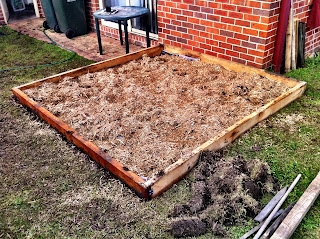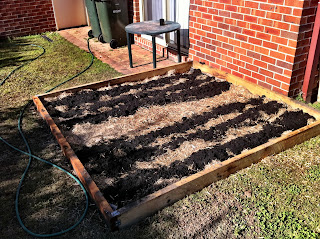Tuesday, July 24, 2012
Wednesday, July 18, 2012
New Vegetable Bed
 |
| Once positioned, I needed to level the timbers. I borrowed a spirit level and removed turf from beneath the sleepers until level. |
 |
| The corners were fixed. I used galvanised plate and screws. A simple job but effective. |
Subscribe to:
Comments (Atom)






